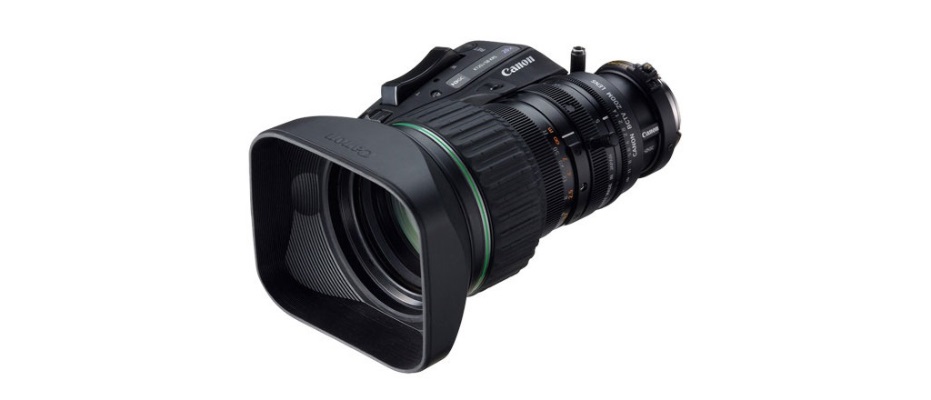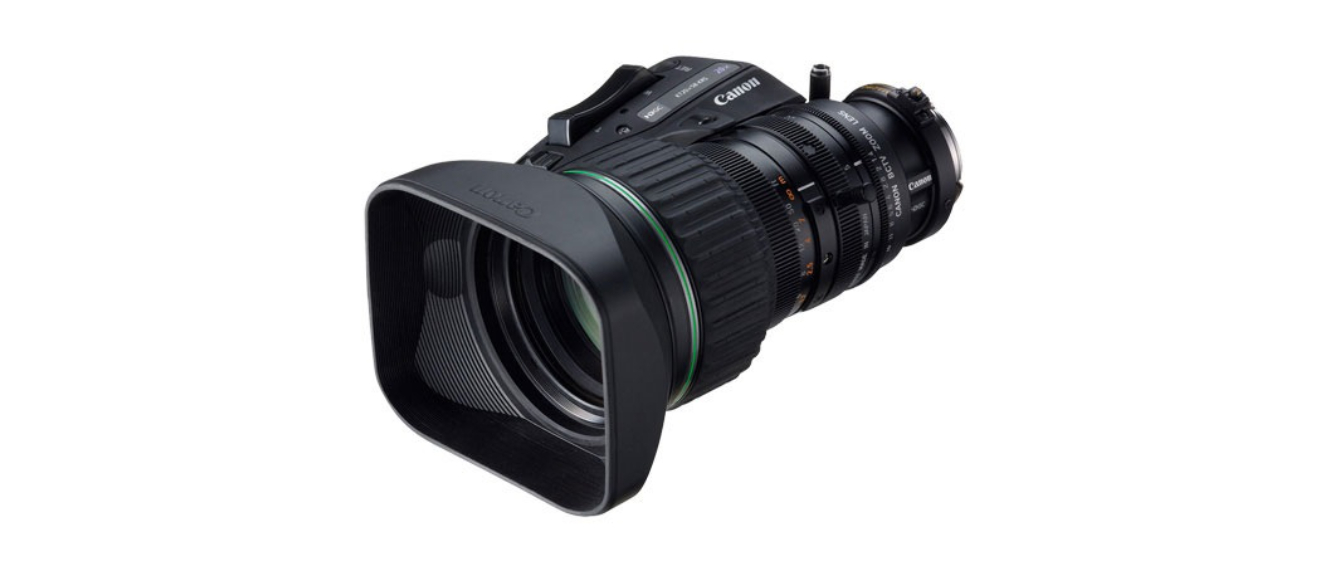
KT20x5B KRS
Principais Características

Principais Características
The world's major professional video manufacturers have introduced a diverse range of low-cost tapeless HD camcorders and tape-based HDV professional camcorders. Various design strategies have been adopted by the manufacturers to decisively drive down the costs of these HD acquisition systems. They include different image format sizes, subsampled imagers, and contemporary digital recording techniques. In support of these products Canon designed an entire family of cost-effective HD ENG/EFP lenses that seek to match both the performance and the costs of these diverse and still-emerging HD acquisition systems. To distinguish this level of lens within the overall Canon HD optical hierarchy they are identified by the logo HDgc - to clearly differentiate them from the already established high performance HDxs line of 2/3-inch portable lenses.
These acquisition systems have been developed in response to the broadcast industry's rapidly growing interest in transitioning to HDTV Newsgathering, HD reality shows, and other lower-budget HD productions. They also directly address the increasing adoption of HD digital origination by the growing independent filmmaking market sector. In addition, they are anticipated to foster growing interest in HD within the broad B2B market sectors. To support this extensive flexibility in HD acquisition systems, the new HDgc family includes 2/3-inch, 1/2-inch, and 1/3-inch lenses.
There are two tiers within the HDgc family - one, that encompasses all of the established operational innovations (enhanced digital drive unit for zoom, focus, iris, and a 2x range extender), and a second that facilitates an even lower overall lens cost by excluding the extender system and replacing the e-Drive system with Canon's more cost-effective new ergonomic Shuttle Shot drive unit. This KT20x5 KRS lens is in the latter tier.
The lower cost HDgc tier offers the KT20x5B KRS, a portable HDTV production lens with a 1/3-inch image format. This particular lens is intended for all whose foremost priority is to have a very cost-effective and lightweight HD acquisition system with the ability to shoot over long distances as well as to capture reasonable wide angles. It was specifically designed for the JVC HDV camcorders, which utilize three 1/3-inch CCD imagers.
ABOUT THIS LENS
Canon used breakthrough technologies and powerful computer-aided design techniques to produce the KT20x5B KRS, a multipurpose HD lens offering focal lengths of up to 100mm while maintaining a horizontal wide angle of 52 degrees. In addition, it is combined with an exceptionally high sensitivity (F1.4 maximum aperture), this is a lens that can be utilized in an unusually broad range of shooting situations at an attractive price point. It is a design directly responding to the expressed creative desires of broadcasters and HD producers for low-cost HD POV and special-application acquisition systems, while also facilitating the corporate, business and industrial sectors to painlessly transition from SD to HD.
The KT20x5B KRS represents a fine compromise between the demands for mobility in a handheld HDTV camera system and the high imaging performance requirements for HDTV production. The requisite optimization strategies to achieve this balance sought a high MTF over the entire image plane, minimization of chromatic aberrations, and maximization of image contrast. Relative light distribution was optimized for the more open aperture settings and this uniformity of brightness across the image plane combined with the high contrast and excellent picture sharpness to produces vividly clear HD pictures. Contrast was extended by careful control of black reproduction - with optical and mechanical design innovations that substantially reduced flare, veiling glare, and any internal reflections. Tight control of the geometric distortion at wide-angle settings constituted another central design imperative. The lens spectral transmittance characteristic was closely coordinated with that of all of the major portable cameras to ensure adherence to the HDTV colorimetric standards and to additionally support flexible creative control of color reproduction.




